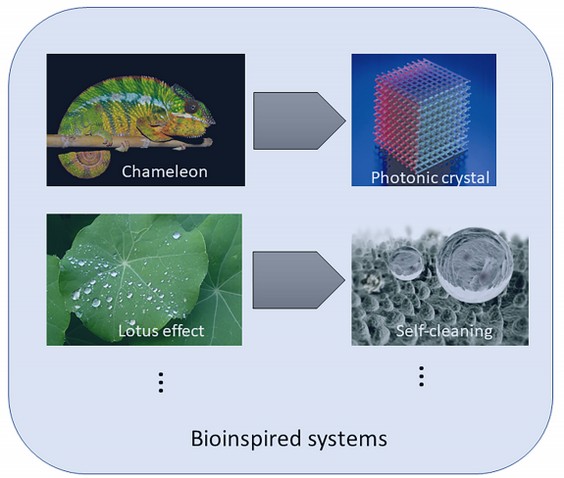2019.04.03.1
Files > Volume 4 > Vol 4 No 3 2019
EDITORIAL
Bioinspired systems: A new upcoming research master program at Yachay Tech University in Ecuador
Ming Ni
Available from: http://dx.doi.org/10.21931/RB/2019.04.03.1
Throughout history, people use different types of biomaterials to repair or replace damaged human tissues. Ancient Egyptians used golden wires to replace the missing teeth; Ancient Mayans used nacre or mother of pearl to achieve the same goal 1, 2. Fast forward to the 20th century; Sir Ridley used Perspex as the material for intraocular lenses 1. Many surgeons pioneered using synthetic polymeric membranes as the material for kidney dialyzers 1. The modern time of biomaterials has come. Science, instead of try-and-error, has been developed to study biomaterials systematically. Professor Larry Hench, who is the inventor of Bioglass©, came up a classification of three generations of biomaterials, starting from bioinert materials to bioactive materials, to the combining of bioactive materials and resorbable materials 3. Most recently, other scientists thought we are upgrading to the fourth generation of biomaterials, which interact with human bodies at molecular, cellular, and tissue levels. As everyone can see, our understanding of biomaterials has been evolved quickly over the past decades. Professor Buddy Ratner at the University of Washington pointed out the importance of surface science in the field of biomaterials 1. The medical devices and implants with proper surface modification could outperform the non-surface-modified devices and implants. For example, hip and joint implants with proper textures could avoid dislodging problems. Surface chemistry, stiffness, and texture play important roles to control stem cell fate, and eventually, the performance of the medical devices and/or implants 1. With the advance of nanotechnology, we could control and manipulate cell-biomaterial interaction at the molecular level or nanoscales. More and more evidence has shown that nanotopographic features affect cell performance. Professor Jan Boer developed a topo-chip that enables us to study topographic impacts on cells systematically and with high-throughput 5.

Figure 1. Mother nature gives us countless examples of bioinspired systems. For example, the skin of chameleon contains nanocrystals. By rearranging these nanocrystals, chameleon is capable to change color in response to environmental change. As another example, lotus effect inspires the development of self-cleaning materials.
Bioinspired systems represent another approach to find out the optimal biomaterials as medical devices and/or implants. Bioinspired systems are nothing new to us. For example, radar has been developed as we learned from bats; lotus effect inspired us to develop self-cleaning building materials. As biomaterials, bioinspired systems have already been well studied and successfully applied in many fields. Geico’s feet inspired us to develop new types of bioglues. Chameleon gave us an excellent example of a photonic crystal. Taken advantages of these bioinspired systems, we could develop superior biomaterials for medical devices and/or implants. Ecuador is a small country in South America but famous for its biodiversity: it has 10% of plants in the whole world. Plastics, as a byproduct for the oil industry, was high-tech in the 1960s. Many medical implants and devices are plastic-based, such as hip, knee, contact lenses, and many more. However, over the last few decades, plastics are everywhere, from the Arctic Ocean to the Antarctic. These plastics last for more than 50 years to completely degrade and present a bigger threat to marine life. As such, more and more researchers start to investigate natural plant materials to replace plastics. Now in Singapore, people use banana leaves instead of plastics for food packaging. Biodiversity in Ecuador provides us limitless arsenal for bioinspired systems and eventually a new generation of biomaterials for medical devices and/or implants. At Yachay Tech University in Ecuador, we are offering a new master program emphasis on bioinspired systems. Our aim is to educate young talents in Ecuador to use the unlimited resource of natural plant materials in Ecuador and to explore their applications in medical devices and/or implants.
REFERENCES
1. B. D. Ratner, A. S. Hoffman, F. J. Schoen, and J. E. Lemons, Biomaterials Science: An Introduction to Materials in Medicine (Elsevier Academic Press, 2004).
2. M. Ni and B. D. Ratner, “Nacre surface transformation to hydroxyapatite in a phosphate buffer solution,” Biomaterials 24(23), 4323–4331 (2003).
3. L. L. Hench, “Bioactive Glass Bone Grafts: History and Clinical Applications,” in book: Handbook of Bioceramics and Biocomposites, DOI: 10.1007/978-3-319-12460-5_5 (2016).
4. C. Ning, L. Zhou and G. Tan, “Fourth-generation biomedical materials,” Materials Today, 19(1), 2-3 (2017).
5. H. V. Unadkat, M. Hulsman, K. Cornelissen, B. J. Papenburg, R. K. Truckenmüller, A. E. Carpenter, M. Wessling, G. F. Post, M. Uetz, M. J. Reinders, D. Stamatialis, C. A. van Blitterswijk and J. de Boer, “An algorithm-based topographical biomaterials library to instruct cell fate,” Proc Natl Acad Sci USA ,108(40):16565-16570 (2011).
Ming Ni
School of Biological Sciences & Engineering, Yachay Tech University, Hacienda San José s/n, San Miguel de Urcuquí 100105, Ecuador
Corresponding author; [email protected]
